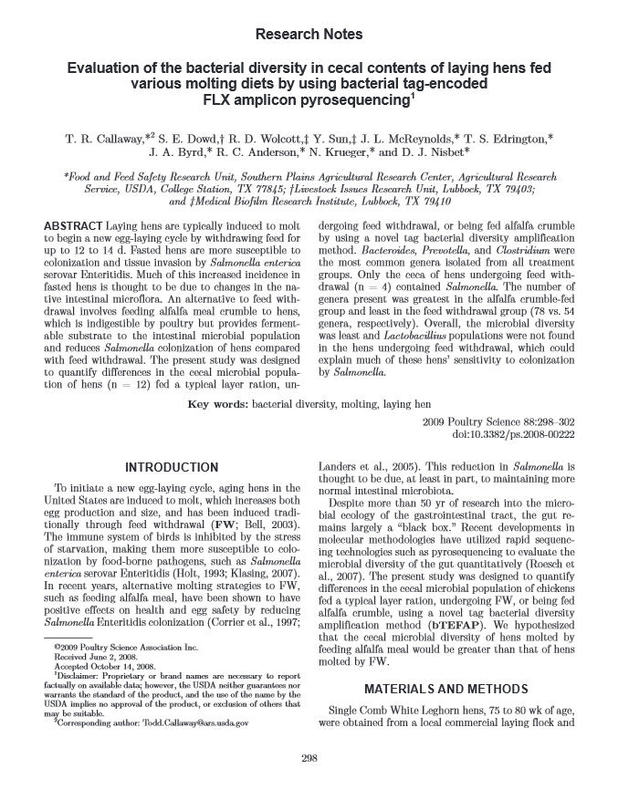Evaluation of the bacterial diversity in cecal contents of laying hens fed various molting diets by using bacterial tag-encoded FLX amplicon pyrosequencing
Title
Evaluation of the bacterial diversity in cecal contents of laying hens fed various molting diets by using bacterial tag-encoded FLX amplicon pyrosequencing
Creator
Date
Subject
Excerpt
Laying hens are typically induced to molt to begin a new egg-laying cycle by withdrawing feed for up to 12 to 14 d. Fasted hens are more susceptible to colonization and tissue invasion by Salmonella enterica serovar Enteritidis. Much of this increased incidence in fasted hens is thought to be due to changes in the native intestinal microflora. An alternative to feed withdrawal involves feeding alfalfa meal crumble to hens, which is indigestible by poultry but provides fermentable substrate to the intestinal microbial population and reduces Salmonella colonization of hens compared with feed withdrawal. The present study was designed to quantify differences in the cecal microbial population of hens (n=12) fed a typical layer ration, undergoing feed withdrawal, or being fed alfalfa crumble by using a novel tag bacterial diversity amplification method. Bacteroides, Prevotella, and Clostridium were the most common genera isolated from all treatment groups. Only the ceca of hens undergoing feed withdrawal (n=4) contained Salmonella. The number of genera present was greatest in the alfalfa crumble-fed group and least in the feed withdrawal group (78 vs. 54 genera, respectively). Overall, the microbial diversity was least and Lactobacillius populations were not found in the hens undergoing feed withdrawal, which could explain much of these hens' sensitivity to colonization by Salmonella.
Relation
Poultry Science
Volume 88, Number 2
pp. 298-302
 An official website of the United States government.
An official website of the United States government.


